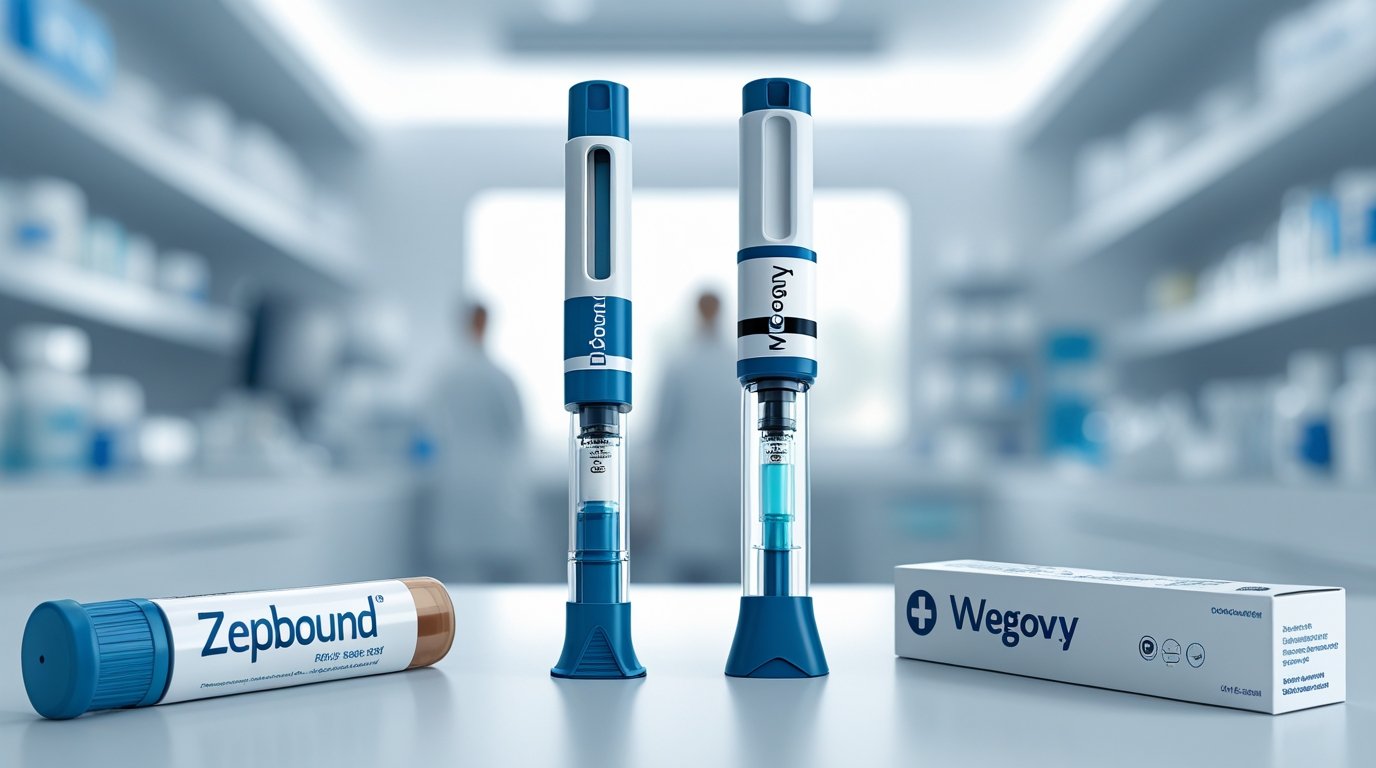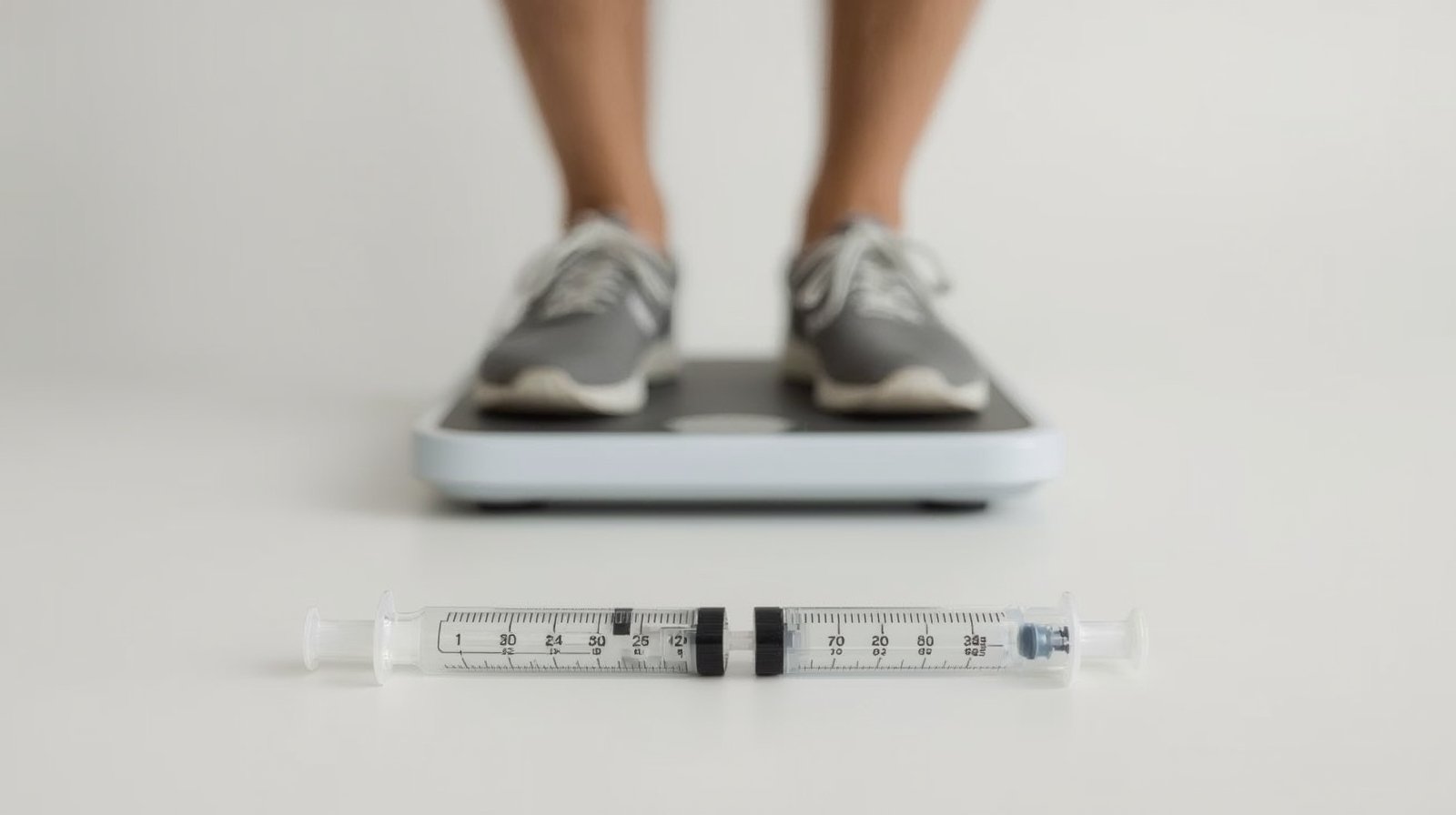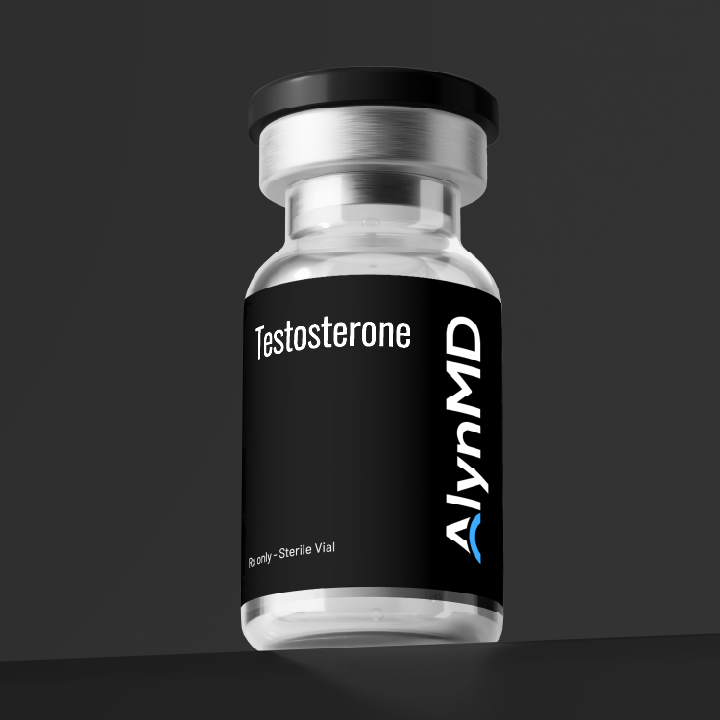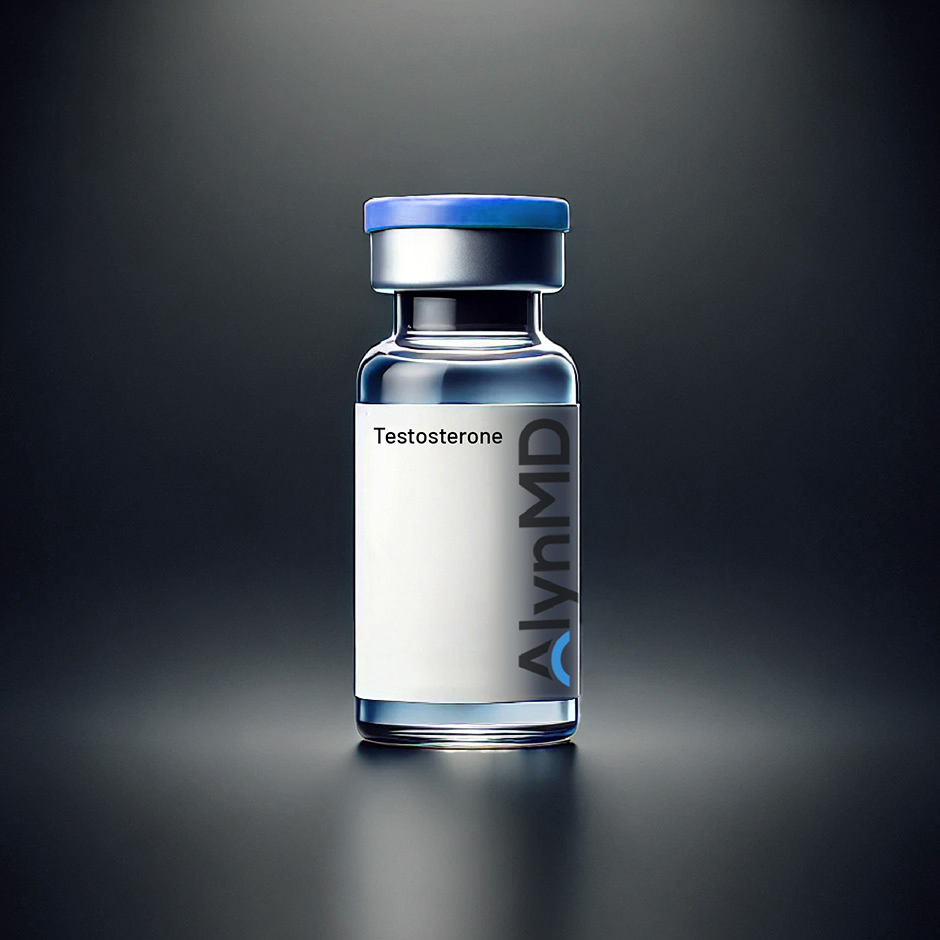
Semaglutide is a medication approved by the Food and Drug Administration (FDA) for weight loss and diabetes treatment. In scientific terms, it’s a glucagon-like peptide-1 (GLP-1) receptor agonist, meaning it acts like a digestive hormone and regulates blood sugar levels and appetite.
The appetite suppression characteristic makes semaglutide an effective weight-loss aid for many people. It works for individuals with diabetes, as well as non-diabetic people.
Semaglutide comes in two forms: injectable and oral. Semaglutide injections are available under the brand names Wegovy and Ozempic. The tablet form is Rybelsus. Both options can bring results, but it’s important to understand the differences so you can choose the option that works best for you over the long term.
Here’s what to consider when making this choice.
- Effectiveness of Semaglutide Tablets vs. Injections
- Time Needed for Results
- Frequency of Administration
- Ease of Administration: Oral Semaglutide vs. Injection
- Safety
- Side Effects
- Directions for Use
- Cost
- Scarcity
Introduction to Semaglutide Medications
Semaglutide medications are a type of glucagon like peptide 1 (GLP-1) receptor agonists, designed to help with both type 2 diabetes and weight management. These medications work by mimicking the effects of the natural hormone GLP-1, which plays a key role in blood sugar control and appetite regulation. Semaglutide is available in two main delivery methods: an oral form (Rybelsus) taken daily, and injectable forms (Ozempic and Wegovy) administered once weekly. Both the oral and injectable versions contain the same active ingredient, semaglutide, ensuring that patients receive consistent benefits for blood sugar control and weight loss regardless of the method chosen. This flexibility allows individuals to select the option that best fits their lifestyle and preferences while supporting their weight management and diabetes goals.
Understanding Semaglutide
Semaglutide belongs to a class of medications known as GLP-1 receptor agonists, which are specifically designed to mimic the action of the body’s own glucagon like peptide 1 hormone. After eating, this hormone is released from the intestines and helps regulate blood sugar by stimulating insulin secretion and slowing down how quickly food leaves the stomach. By activating these GLP-1 receptors, semaglutide not only improves blood sugar control but also helps reduce appetite, making it a valuable tool for both diabetes management and chronic weight management. Clinical trials have shown that semaglutide can lead to significant reductions in HbA1c (a key marker of blood sugar control) and body weight. As an FDA approved medication, semaglutide is recognized for its effectiveness in supporting both blood sugar regulation and weight loss in people with type 2 diabetes and those seeking long-term weight management solutions.
Effectiveness of Semaglutide Tablets vs. Injections
Semaglutide works the same way for weight loss in pill and injection forms. Both mimic GLP-1 hormones to help suppress appetite. A systematic review and meta analysis comparing oral and injectable semaglutide found both forms to be effective and safe, with some differences in outcomes. One study of patients with diabetes found that those receiving injections lost 8.1 lbs, compared to 7.2 lbs for tablet takers. Glycemic control is a key outcome, and both oral and injectable semaglutide have been shown to effectively reduce HbA1c and regulate blood sugar in people with type 2 diabetes. Another study in the Journal of American Medicine (JAMA) found oral and injectable semaglutide produced similar results, with participants experiencing a 15.1% reduction in body weight. Achieving significant weight loss (≥5%) is a clinically important outcome, and injectable semaglutide may result in more weight loss compared to the oral formulation.
Rybelsus is the oral counterpart of Ozempic, and while both can provide the same benefit in terms of health outcomes, individual results depend on adherence and patient-specific factors. The key differences between oral and injectable semaglutide include the method of administration, dosing frequency, and the potential for more weight loss with higher injectable doses.
Adherence to the dosage schedule is important for results. Also, oral semaglutide gets absorbed in the stomach.
Time Needed for Weight Loss Results
The results of injectable semaglutide are evident quickly, with a reduced appetite evident after one to four weeks and weight loss occurring between five and 20 weeks. After the first five or six months, you can begin to incorporate diet and exercise to prepare to maintain your weight after you stop injections.
For oral semaglutide, it is crucial to follow the dosing instructions carefully to ensure consistent absorption and optimal results.
Short-term effectiveness also depends on taking the pills in the right conditions. The tablet should be taken on an empty stomach first thing in the morning, and you should avoid eating or drinking anything, including other medications, for at least 30 minutes afterward to maximize absorption and reduce side effects.
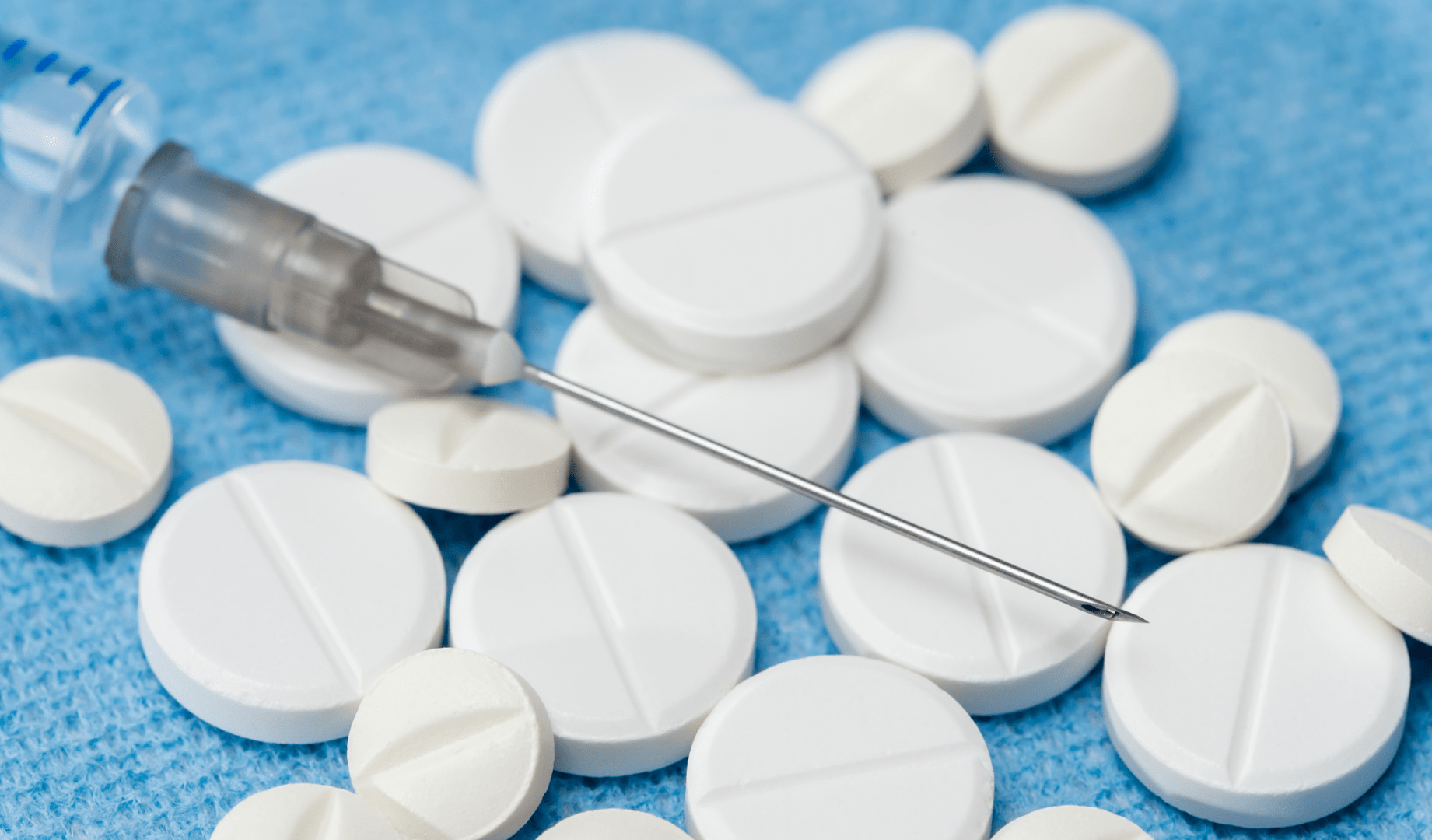
Frequency of Administration
Ozempic, the injectable form of semaglutide, is administered weekly, making once weekly dosing a key feature of this medication. You inject yourself on the same day each week during the treatment, and a doctor may adjust doses as needed. Weekly injections are considered convenient for many patients, and once weekly injectable semaglutide offers a flexible dosing schedule.
Rybelsus is a daily pill that you need to take under the same conditions each morning. These different delivery methods—oral daily versus injectable weekly—can influence patient adherence and overall treatment experience.
Frequency can affect overall outcomes. If you miss days or fail to take tablets under the right circumstances, you could limit their effectiveness. In case of a missed dose, follow your healthcare provider’s instructions: for once weekly injectable semaglutide, take the missed dose as soon as possible within 5 days, then resume your regular schedule; for oral semaglutide, skip the missed dose and take your next dose at the usual time—do not double up. This can make it more difficult to adhere to your dosage regimen.
Ease of Administration: Oral Semaglutide vs. Injection
Ozempic and Wegovy come in single or multi-injection devices. A vast majority of patients in a study published in the journal Diabetes, Obesity, and Metabolism reported no pain, very mild pain, or mild pain after each injection.
However, oral semaglutide doesn’t require an injection, though you do need to swallow doses daily instead of taking a weekly shot. The pill form is a convenient alternative for those who wish to avoid injections, and it does not require refrigeration, which can be an advantage for some patients.
Personal preferences play a role in determining which type is easier to take. You might prefer the shallow weekly injection and the mild discomfort it might bring over the daily tablets taken in precise conditions. Or, you could opt to avoid the challenge of needles and use the completely non-invasive oral route.
Is a GLP-1 Medication Right for You?
See if a GLP-1 like Semaglutide or Tirzepatide is a fit for your health goals.
Safety in Clinical Trials
The FDA has approved Ozempic for weight loss and labeled it safe to use for this purpose. However, it warns of the potential of developing thyroid tumors, pancreatic cancer, and kidney damage.
Safety is a major consideration when choosing between oral and injectable semaglutide. Clinical studies have reported adverse events and adverse effects, such as nausea and diarrhea, for both forms, which can impact treatment continuation and tolerability.
There are also concerns about overdoses, such as accidentally injecting multiple doses. You can’t flush semaglutide out of your system; this means you need to wait for it to process through your kidneys. The extra dose will take approximately five weeks to dissipate.
Further, drinking alcohol while taking the medication can result in extremely low blood sugar, which can impact patients with diabetes. There are also concerns about interactions with other medications, including over-the-counter cold and flu meds.
Some in the medical community are concerned that the popularity of Ozempic and its peers is based on a few clinical studies and social media buzz. They contend that more research is needed to explore the safety and effectiveness of the different delivery options.

Side Effects
In addition to concern about long-term cancer, organ risks, and overdoses, you should also consider the more common acute side effects of the two semaglutide delivery options.
According to oral semaglutide brand Rybelsus, the most common side effects are:
- Nausea
- Vomiting
- Diarrhea
- Constipation
- Stomach pain
- Abdominal pain
Many patients experience gastrointestinal side effects, including abdominal pain, nausea, and diarrhea. Semaglutide slows digestion, which helps reduce appetite and support weight loss, but this mechanism can also lead to digestive side effects.
Nervousness, rashes, dizziness, and mood changes have also occurred. Because of the delivery method, nausea and other digestive tract ailments are more common with oral semaglutide.
Injectable semaglutide has a similar set of side effects, including:
- Digestive tract issues and nausea
- Fatigue
- Gallstones
- Headaches
- Hair loss
Regardless of your delivery choice, it’s important to monitor your health while taking semaglutide. That way, you can detect side effects early and take steps to limit their impact.
Directions for Use
The manufacturers provide directions for taking oral and injectable semaglutide. However, you should consult a doctor before starting your regimen and defer to their directions.
The directions for oral use are quite specific: Take the semaglutide tablet in the morning, 30 minutes before eating or taking any other oral medications or vitamins. You should take the pill with no more than four ounces of water. Following these dosing instructions is important for optimal absorption and efficacy. Oral semaglutide is absorbed through the digestive system, and it can also be used in combination with basal insulin to improve glycemic control in people with type 2 diabetes.
Injections refer to subcutaneous semaglutide, which should be administered on the same day each week. The directions are as follows: Add a new needle to the pen-like injection device. You can then check the flow of the medication. If the device allows you to select a dose, make sure you choose the one prescribed by your doctor.
You make the injection under your skin, not in your muscle or vein. The stomach, shoulders, or thighs are the best injection sites. After injecting, you then need to dispose of the needle in a safe container, which should be supplied with the injection devices. Injectable semaglutide bypasses the digestive system, ensuring consistent absorption and efficacy.

Impact on Body Weight
One of the most notable benefits of semaglutide is its impact on body weight. Clinical trials have consistently shown that people taking semaglutide experience an average weight loss of 10-15% of their initial body weight. This significant weight reduction is achieved through the medication’s ability to decrease appetite and increase feelings of fullness, which naturally leads to lower calorie intake. In addition to overall weight loss, semaglutide has been shown to improve body composition by reducing fat mass while helping to preserve lean muscle. These effects make semaglutide a powerful option for those seeking to improve their health through weight loss, as well as for individuals looking to enhance their body composition as part of a comprehensive weight management plan.
Cost
Cost is usually a factor when you have to choose between multiple medications. In the case of semaglutide, this is technically not the case. Monthlong supplies of Ozempic and Rybelsus cost the same, at $935.
Keep in mind that increased demand or supply shortages can raise the price tag. This can affect the cost of one or both of these medications.
Insurance coverage is possible. However, most insurers will only cover semaglutide for diabetes treatment, not for weight loss, which often falls under “elective” or “medically unnecessary” treatments. Semaglutide is more likely to be covered when prescribed as a diabetes medication, such as Ozempic or Rybelsus, since these diabetes medications are approved for managing type 2 diabetes. These classifications can vary from insurer to insurer and can also depend on a doctor’s diagnosis or medical coding. The American Diabetes Association recommends GLP-1 receptor agonists, including semaglutide, for people with type 2 diabetes, and supports insurance coverage for these medications.
For those interested in a convenient and reliable option to purchase semaglutide medications, Alyn MD offers an online service where you can buy GLP-1 receptor agonists safely and with professional guidance. Visit Alyn MD’s GLP-1 agonists page to explore available options and learn more about their treatment programs.
Insurance Coverage
Insurance coverage for semaglutide medications can vary widely depending on the specific product and your insurance plan. Many major insurance providers, including Medicare and Medicaid, do offer coverage for semaglutide, especially when prescribed for diabetes management. However, coverage for weight loss or chronic weight management may be more limited and often depends on your individual plan and medical necessity. It’s important to check with your insurance provider to understand your benefits, potential out-of-pocket costs, and any requirements for prior authorization. If cost is a concern, discuss options with your healthcare provider, as there may be patient assistance programs or alternative solutions available to help make semaglutide medications more affordable. Open communication with your healthcare provider and insurance company can help ensure you receive the treatment that best fits your health and financial needs.
Scarcity
Scarcity of each drug is something else to consider when deciding between oral and injectable semaglutide. Novo Nordisk, the company that makes Wegovy and Ozempic, has already experienced shortages due to high demand. Other factors like supply chain issues and lack of certain ingredients needed to make the medications can also create scarcity.
This is a significant issue because this drug is also necessary for some patients with diabetes and weight loss regimens can last for more than a year. Shortages could cause a premature end to your weight loss treatment.
During the most recent shortage, oral semaglutide remained available after supplies of injectable drugs ran out. However, with many doctors switching their patients to tablets, the oral semaglutide supply could also be strained.
You should weigh the benefits and drawbacks of oral and injectable semaglutide and decide with the help of your physician which option is best for your weight-loss plans and goals.







